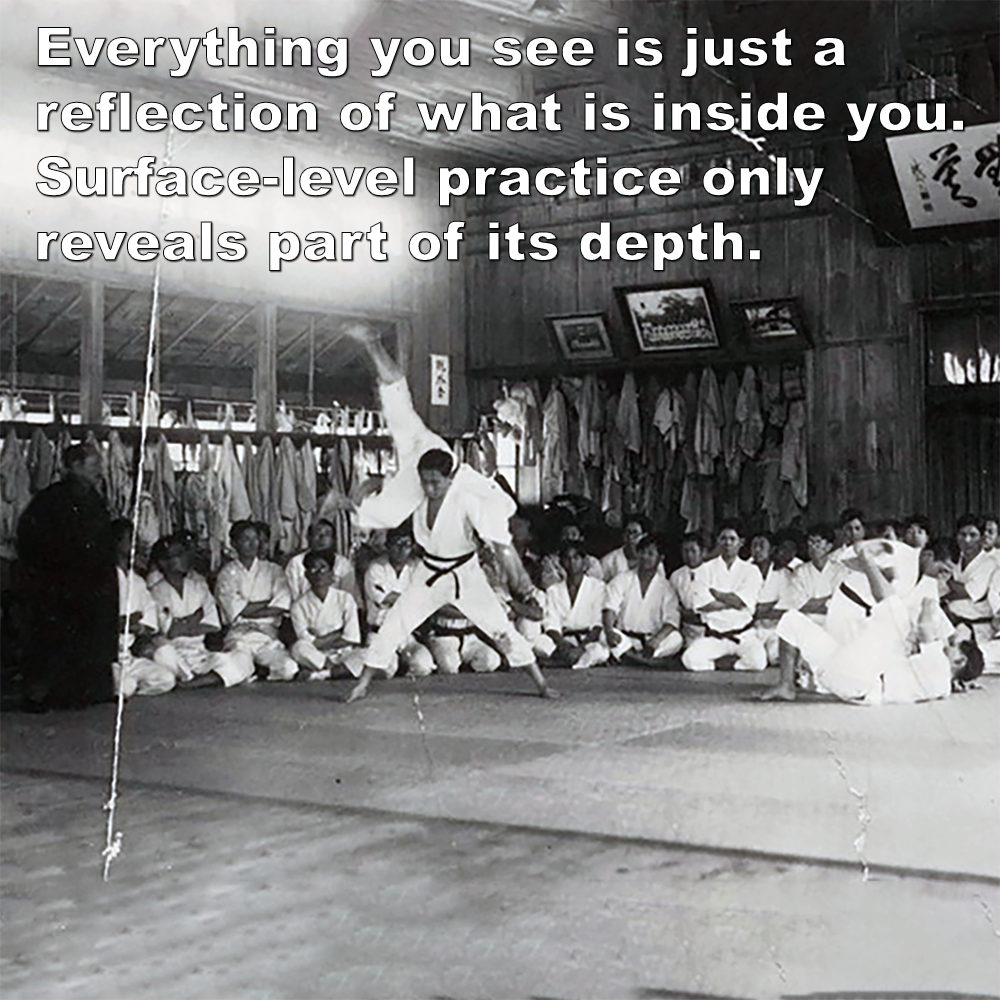
Everything you see is just a reflection of what is inside you. Surface-level practice only reveals part of its depth.
Posted by ADAM CARTER on AUG 08, 2024

Everything you see is just a reflection of what is inside you. Surface-level practice only reveals part of its depth.
(Approx 1 minute 50 second read)
“As up to now [1938] karate has only partly been introduced in Tokyo, people who exercise karate in Tokyo believe that it solely consists of punching and kicking techniques. When talking about ‘gyaku-waza’ (locks) and ‘nage-waza’ (throws) they assume that these only exist in jūjutsu and jūdō. This way of thinking is exceedingly counterproductive with respect to karate itself and can only possibly be attributed to a lack of knowledge.” – Kenwa Mabuni, 1938, Kōbō Kenpō Karate-dō Nyūmon.
In more recent times, as martial arts have shifted their focus from self-defense to sport and physical development, the striking arts have gradually overlooked the close-range, traditional techniques of ‘old-school’ karate. This shift has led to a narrowing of karate’s application, focusing primarily on striking at the expense of other crucial skills.
For karate to be truly effective for civilian self-defense, practitioners must be prepared for close-range encounters. This is particularly crucial for those accustomed to the medium-to-long-range methods of modern karate. In such situations, what options remain if your strikes fail to end the fight?
The martial artists of the past fully recognized the importance of basic skills in joint-locking, grappling, and throwing. These techniques were integral to their training, ensuring they were equipped to handle any situation. However, much of mainstream karate practice today completely lacks any functional use of grappling techniques and practical close-range applications.
Karate, for me, has to be practical – something that is often lacking in modern karate. A pragmatic approach to karate training for the purpose of self-defense is something to which many mainstream karate instructors give only superficial attention, mistakenly believing that fighting and self-defense are the same thing. Techniques effective for set-kumite, competition, and sparring in the dojo are not necessarily sensible choices for self-defense.
For many karate practitioners, one of the most challenging elements of karate is learning the nuances found deep within the principles, techniques, and drills.
Few have the time or inclination to delve into the depths that karate has to offer, and even if they do, finding an instructor with the knowledge to help them can be very difficult. There is often a misunderstanding of the application behind techniques, which comes from just physically training in karate and not studying karate.
Anyone can memorize by rote, but that doesn’t mean they comprehend what they are doing. For any information to truly be useful, you must not only memorize it but also understand its deeper implications and practical applications. Only then can karate remain a potent tool for self-defense.
AC
![]() Photo Credit: photo is from Waseda University, Japan, 1935, far left in black is Funakoshi Gichin.
Photo Credit: photo is from Waseda University, Japan, 1935, far left in black is Funakoshi Gichin.
